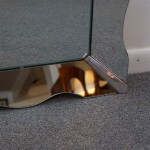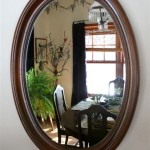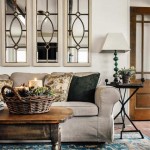Antiqued Mirror Tiles
Antiqued mirror tiles offer a unique blend of vintage charm and modern versatility, making them a sought-after design element for various applications. Their distinctive aesthetic adds depth and character to spaces, ranging from residential bathrooms and kitchens to commercial lobbies and restaurants. This article will explore the characteristics, manufacturing process, applications, installation methods, and care considerations for antiqued mirror tiles.
The defining characteristic of antiqued mirror tiles is their aged appearance. This effect is achieved through various techniques that mimic the natural aging process of glass. The resulting surface exhibits subtle imperfections, including faint spotting, slight discoloration, and a gently distressed texture. These imperfections contribute to the tiles' unique character and provide a sense of history and elegance.
Several methods are employed to create the antiqued effect. One common technique involves applying a chemical solution to the back of the mirror, causing controlled corrosion that results in a mottled appearance. Another method utilizes specialized coatings that mimic the look of tarnished silver or mercury, common in antique mirrors. Sandblasting can also be used to create a gently frosted surface, adding to the aged effect. Finally, some manufacturers employ a combination of these techniques to achieve a specific desired look.
The manufacturing process typically begins with standard mirror glass. After cutting the glass to the desired tile size, the antiquing process is applied. A protective backing is often added to the back of the tiles to enhance durability and prevent further corrosion. This backing also simplifies installation and provides added safety.
Antiqued mirror tiles are exceptionally versatile and can be incorporated into various design schemes. They are frequently used as backsplashes in kitchens and bathrooms, adding visual interest and reflecting light to brighten these spaces. In living rooms and dining rooms, they can be used to create accent walls or decorative features, adding a touch of vintage glamour. Commercially, antiqued mirror tiles are often utilized in restaurants, bars, and hotels to create a sophisticated and atmospheric ambiance.
Beyond wall applications, antiqued mirror tiles can be incorporated into furniture and decorative objects. They can be used to enhance cabinet doors, tabletops, and picture frames, adding a unique and personalized touch. Their reflective qualities can also be used to create a sense of spaciousness in smaller rooms.
Installing antiqued mirror tiles is similar to installing standard ceramic or glass tiles. A smooth, clean, and level surface is essential for proper adhesion. Thin-set mortar is typically used to adhere the tiles to the substrate. Spacers are recommended to ensure uniform grout lines. Once the mortar has cured, grout is applied to fill the spaces between the tiles, completing the installation. Specialized mirror mastic can also be utilized for adhering the tiles, particularly in areas exposed to moisture.
Proper care and maintenance will ensure the longevity and beauty of antiqued mirror tiles. Regular cleaning with a soft cloth and a mild glass cleaner will help maintain their luster. Abrasive cleaners and harsh chemicals should be avoided, as they can damage the antiqued finish. For stubborn stains or buildup, a solution of warm water and vinegar can be used. It's important to dry the tiles thoroughly after cleaning to prevent water spots.
The variety of styles and finishes available allows for extensive design flexibility. Some tiles feature a heavily antiqued look with prominent distressing, while others offer a more subtle, understated appearance. The color of the antiquing can also vary, ranging from warm silvers and golds to cool grays and blues. This breadth of options allows designers to select the perfect tiles to complement any décor.
When selecting antiqued mirror tiles, consider the overall design aesthetic of the space. Heavily antiqued tiles can create a dramatic focal point, while subtly antiqued tiles offer a more understated elegance. The size and shape of the tiles should also be considered. Smaller tiles are ideal for intricate designs and curved surfaces, while larger tiles can create a more contemporary look. The lighting in the space will also affect the appearance of the tiles, influencing how the antiqued finish reflects light and contributes to the overall ambiance.
The use of antiqued mirror tiles continues to grow in popularity, driven by the increasing demand for unique and personalized design elements. Their ability to blend seamlessly with both traditional and contemporary styles makes them a versatile choice for a variety of applications. From adding a touch of vintage charm to creating a dramatic statement, antiqued mirror tiles offer a unique and captivating design solution.

Antique Mirror Tiles Vintage Müller Designs

Aged Foxed Antique Distressed Mirror Tile Oxford Composite

Antique Mirrored Wallpaper Mad About The House

Antiqued Mirror Panels Antique Tiles Tmp 16 Aldgate Home Ltd

Merola Tile Re Beveled Antique Mirror 3 In X 6 Glass Wall 10 4 Sq Ft Case Wsdlsbam The Home Depot

Antique Mirror Tiles Backsplash Müller Designs

Antique Mirrors Capital Glass

Antique Mirror Tiles 6 Pack

Antique Mirror Tiles For Wall Müller Designs

10 Mirror Tiles Ideas House Design Interior








